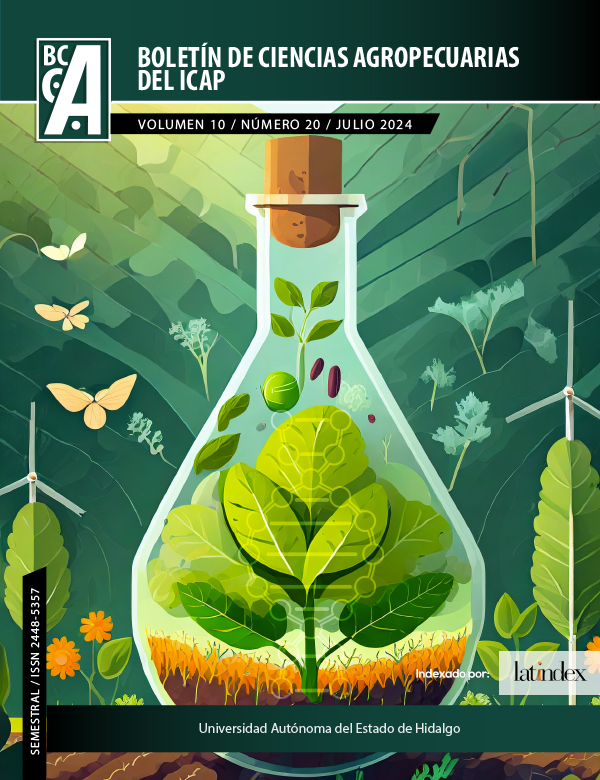Specific Protocol for Diaphanization and Bone Staining in Sceloporus grammicus (Tschudi, 1845)
DOI:
https://doi.org/10.29057/icap.v10i20.12522Keywords:
Alizarin Red,, Diaphanization, Ecotoxicology, Opacity Histogram, Potassium HydroxideAbstract
Introduction: Diaphanization, a specialized histological process that utilizes chemical substances such as potassium hydroxide (KOH), allows for the clarification of soft tissues without affecting hard tissues like bones and cartilage. This is of vital importance in anatomical, ecotoxicological, and comparative studies. Materials and Methods: Heuristic trials were conducted, adjusting the concentrations proposed by Romero and González (2019) for the fish Gymnocorimbus ternetzi, specifically for Sceloporus grammicus. Two specimens were used, each with different chemical and temporal concentrations. Subsequently, the transparency of each was analyzed using the opacity histogram with the distribution of values in the alpha channel, with the aim of finding significant differences through a Student's t-test. Results: A statistically significant difference in transparency between specimens A and B was identified (t = 4.5017, p < 0.0001). Lizard B showed a considerably higher average transparency (211.92) compared to Lizard A (157.71). The 95% confidence intervals, both parametric and bootstrap, strongly supported the importance of this disparity. Conclusions: Adapting existing techniques, as in this study, is crucial to optimize results and ensure applicability. The variation between eviscerated and intact specimens highlights the dilemma of balancing transparency and structural integrity. The rapid transparency in the eviscerated specimen may cause fragility, while the technique in the intact specimen is more gradual but potentially more effective in structural conservation. Given the lack of specific protocols for each species, this study contributes to the knowledge of histological techniques.
Downloads
References
. Sandoval, D., Téllez, J., Rivera, G., Moreno, S., & Moreno, F. (2016). Técnica de diafanización para describir el desarrollo embrionario del sistema óseo. Revisión de la literatura. Universitas Médica, 57(4), 488-501.
. García, A., & Gómez, F. A. M. (2015). Técnica de diafanización con alizarina para el estudio del desarrollo óseo. Revista Colombiana Salud Libre, 10(2), 109-115.
. Labarta, A. B., Cuadros, M. V., Gualtieri, A., & Sierra, L. G. (2016). Evaluación de la morfología radicular interna de premolares inferiores mediante la técnica de diafanización, obtenidos de una población argentina. Revista Científica Odontológica, 12(1), 19-27.
. Romero-Oliva, O. J., & González-Rodríguez, K. A. (2019). Optimización de la técnica diafanización y tinción de Piovesana (2014), aplicada para el pez Gymnocorymbus ternetzi. Pädi Boletín Científico de Ciencias Básicas e Ingenierías del ICBI, 7(13), 41-46.
. Hernández-Gil, Y., Lara-Uc, M., & Reséndiz, E. (2015). Comparación de técnicas de diafanización para la observación de estructuras óseas de crías de Lepidochelys olivacea (Eschscholtz, 1824) (Reptilia, Cheloniidae). Ciencia y Mar, 24(56), 19-27.
. Gutiérrez-Pech, G. A., Sánchez-Fabila, G., Moreno-Colín, R., Del-Moral-Flores, L. F., Rodríguez-Trinidad, I. D. L. Á., & Torres-Salazar, F. (2020). Diafanización dental de cuatro especies de seláceos (Carcharhinus leucas, Galeocerdo cuvier, Rhizoprionodon longurio y Sphyrna sp). International Journal of Morphology, 38(4), 970-974.
. Oliva, O. J. R., Sánchez, E. M. O., Méndez, J. P., & García, F. P. (2021). Técnica optimizada de diafanización y tinción: herramienta para estudios ecotoxicológicos en Actinopterigios. Manglar, 18(2), 143-148.
. Rejala, R., Ramírez, T. Á., Alvarenga, A., Coronel, A., Alborno, Á., Sirai, P. & Romero, A. (2019). La diafanización como alternativa metodológica para el estudio anatómico de un pez. Revista Científica Estudios e Investigaciones, 8, 207-208.
. Torres Torres, A. M., Trespalacios, C., Pachón Barbosa, N. A., & Ruda, N. (2017). Diafanización como alternativa metodológica para el estudio anatómico en reptiles de la clase Sauropsida.
. Kapoor, B. G., & Khanna, B. (2004). Ichthyology handbook. Springer Science & Business Media.
. Zug, G. R., Vitt, L., & Caldwell, J. P. (2001). Herpetology: an introductory biology of amphibians and reptiles. Academic press.
. González, M. Á. M., Villegas, A. S., Atucha, E. T., & Fajardo, J. F. (Eds.). (2020). Bioestadística amigable. Elsevier.
. Castro, E. M. (2019). Bioestadística aplicada en investigación clínica: conceptos básicos. Revista médica clínica las Condes, 30(1), 50-65.
. Moya, J. A. (2012). Procesamiento y análisis de imágenes digitales. Instituto Tecnológico de Costa Rica.
. Pearson, H. (2005). Image manipulation: CSI: cell biology. Nature, 434(7036), 952-954.

















